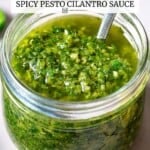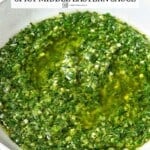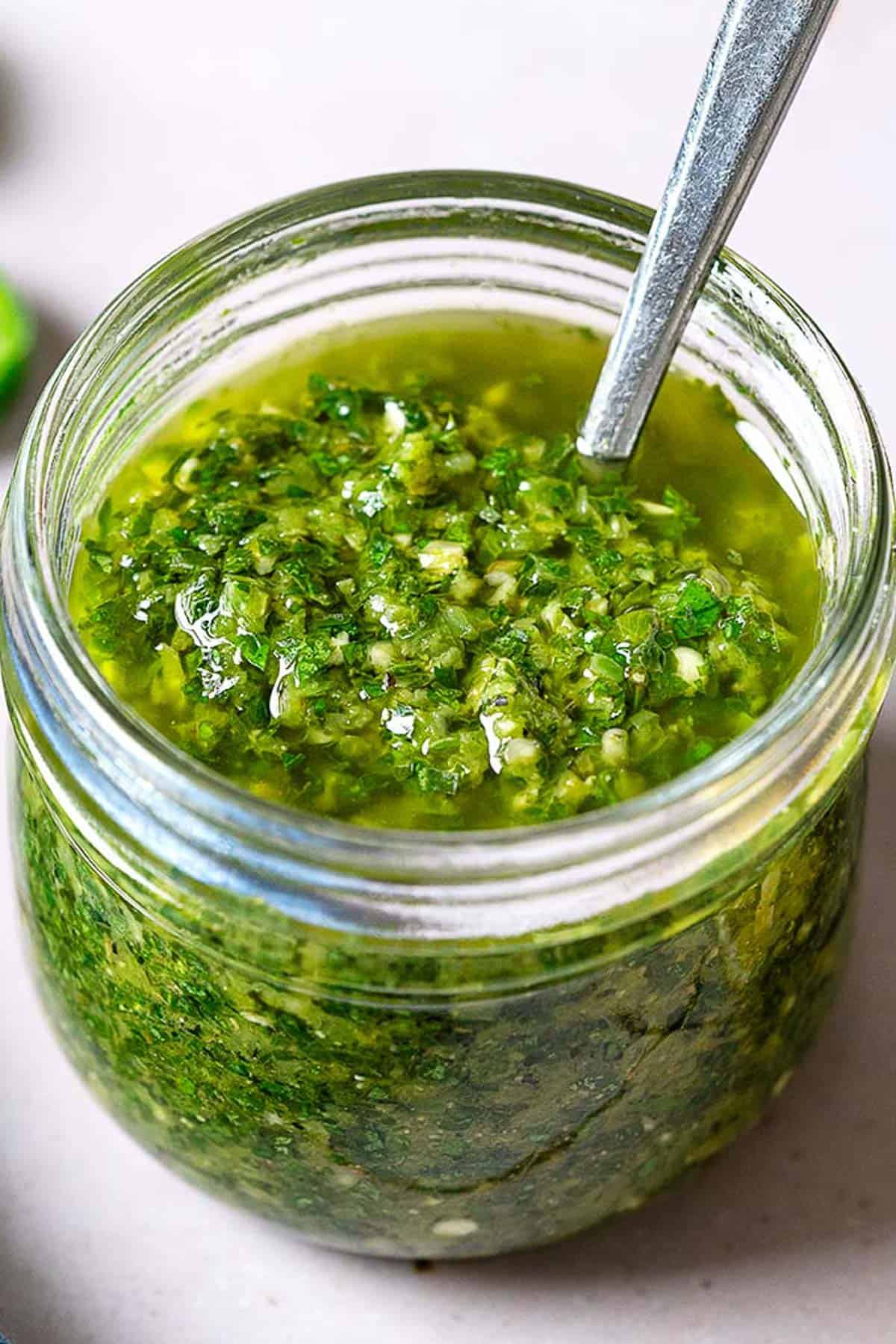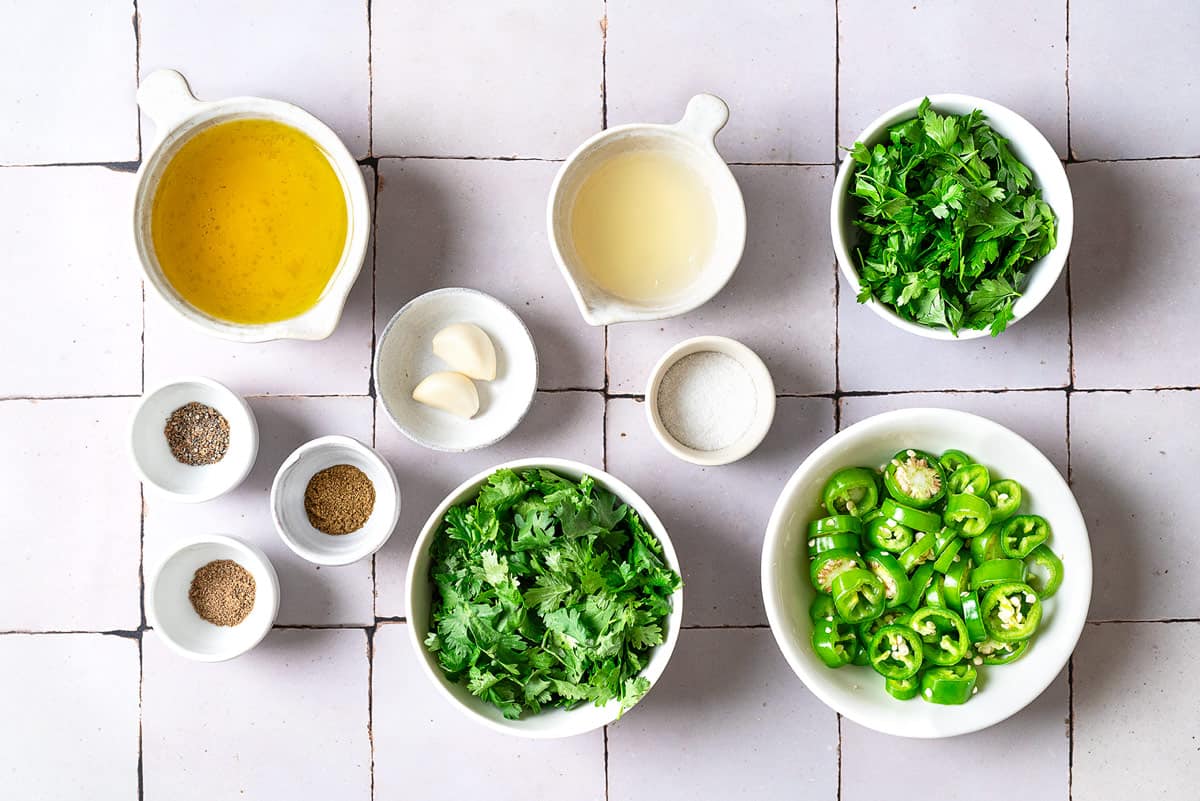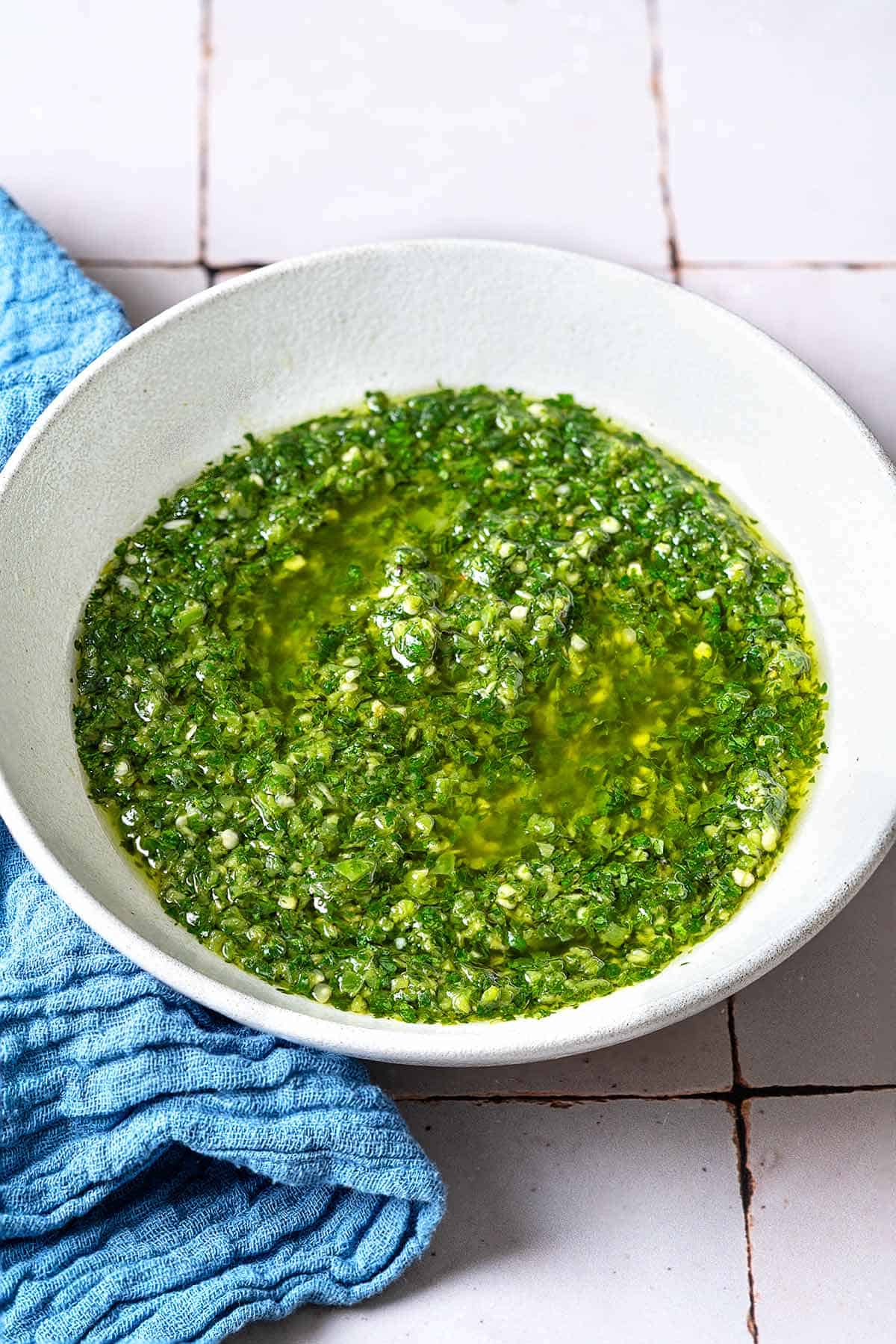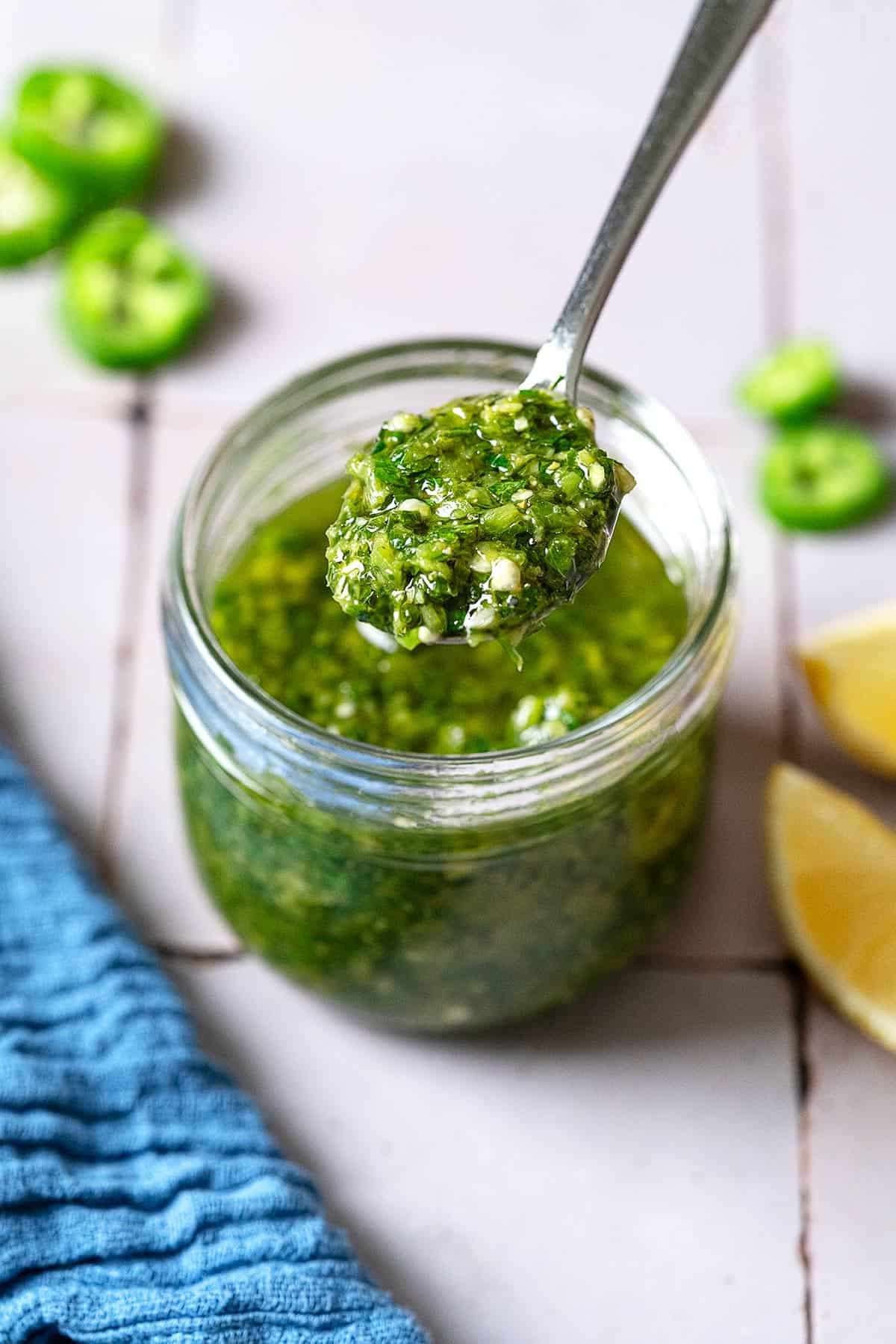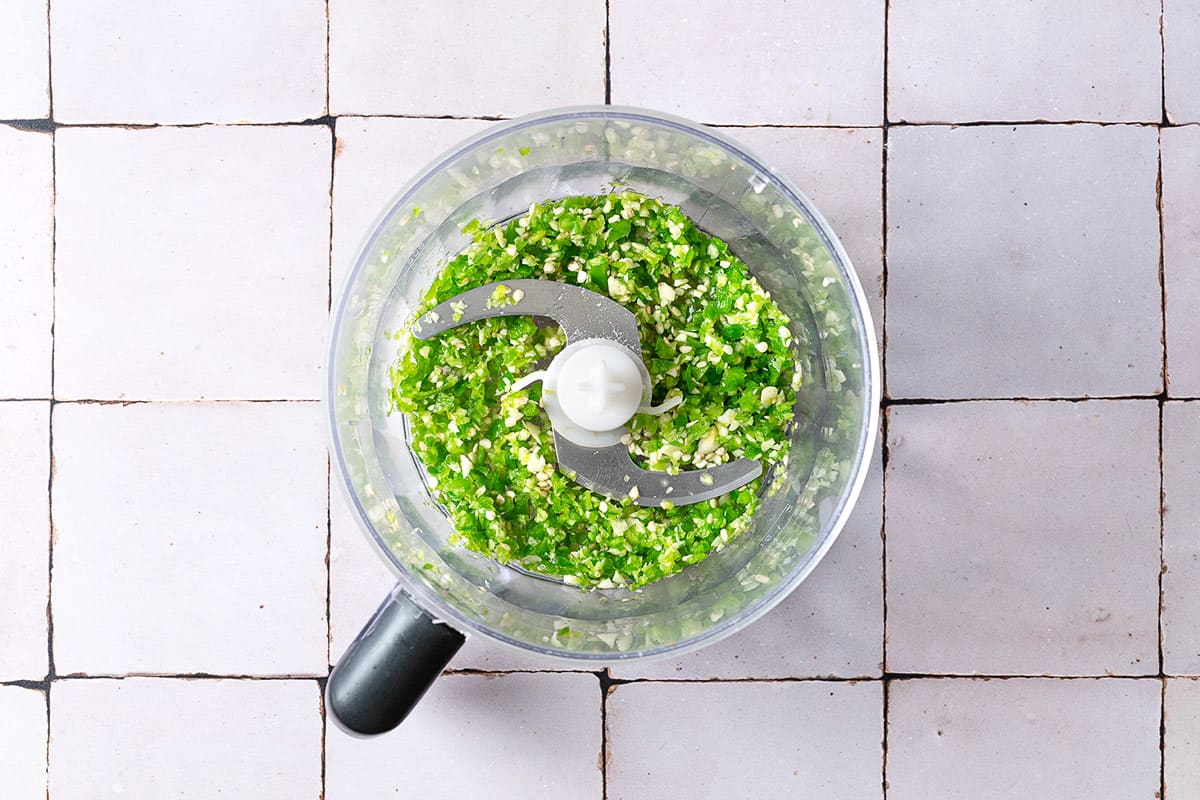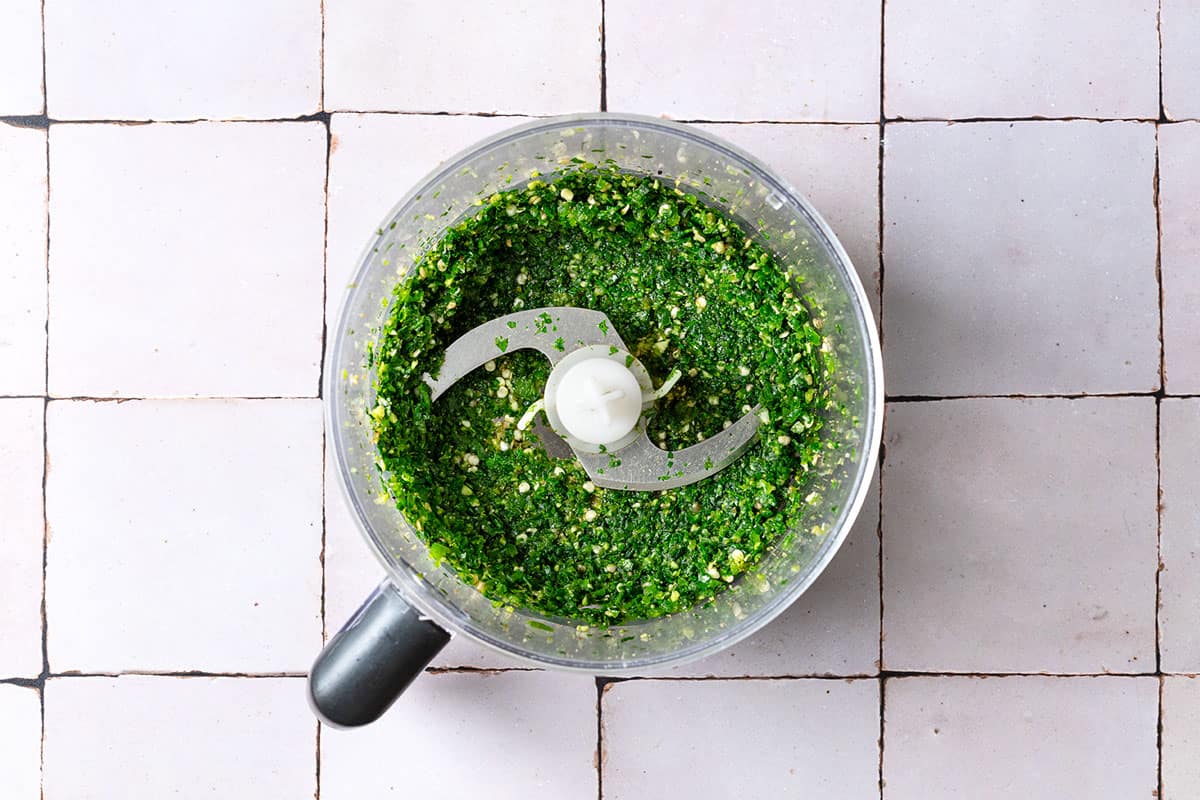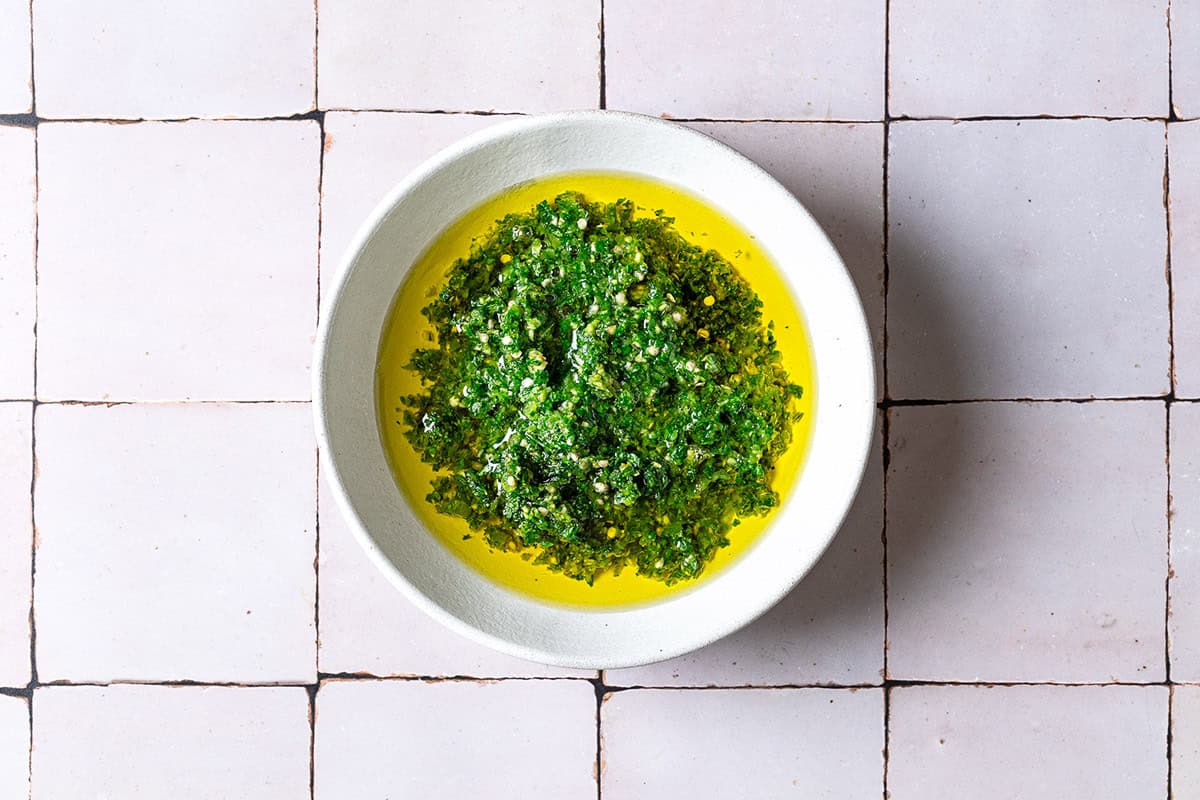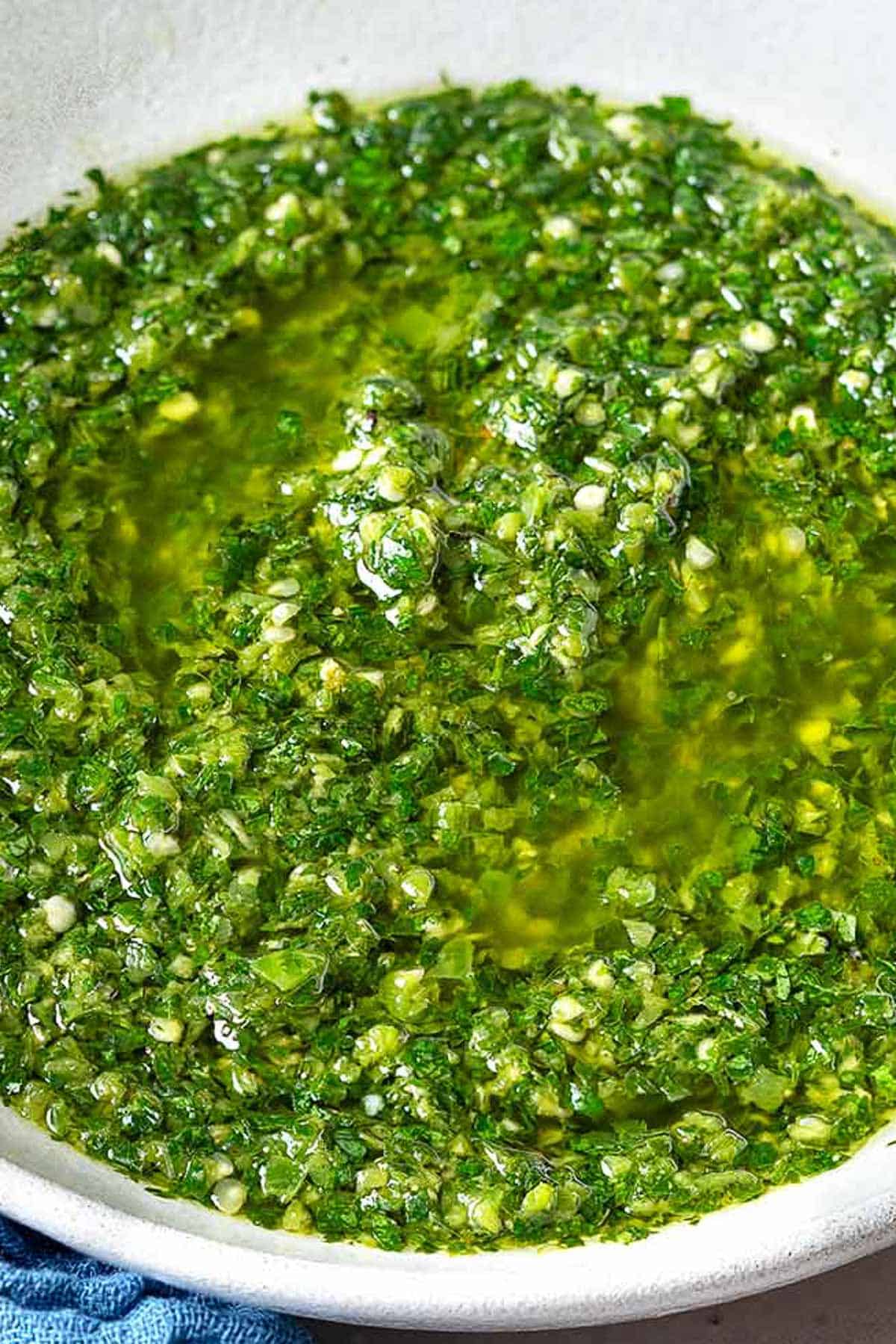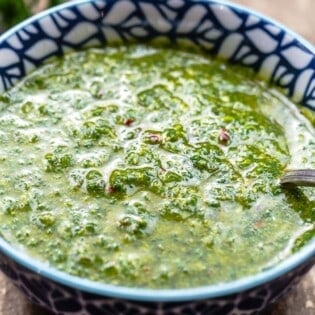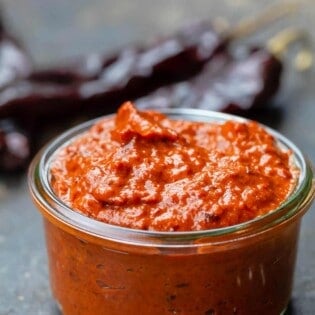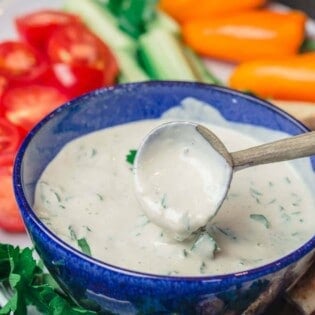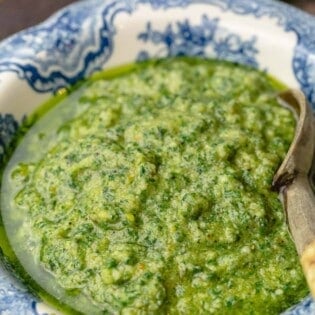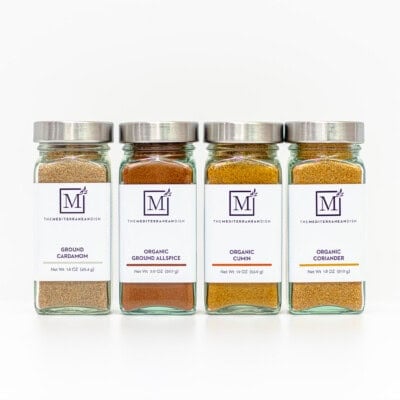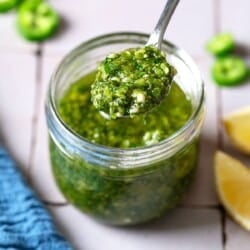Zhoug is often called “Middle Eastern pesto.” And as much as I love a fresh Basil Pesto, to me this sauce deserves its own spotlight! Both sauces are herbaceous, garlicky and fragrant, sure. But where pesto is umami-rich, nutty, and somewhat understated, zhoug is super bold: very spicy and tangy with warming, earthy undertones. This vibrant green flavor-maker first originated south of the Mediterranean in Yemen, particularly among the Yemeni Jewish community. Today, it’s used throughout the region, as a hot sauce for Falafel, Shawarma, and dip for Pita Bread, to name a few. And as much as I think falafel and shawarma should be in your rotation, this recipe is very translatable to whatever you’re making on a given weekday. Use it as a meat marinade, or sandwich spread, and spoon it over Scrambled Eggs. It’s certain to make any recipe next level!
What is in Zhoug?
Zhoug is one of those beloved Middle Eastern sauces that’s made its way throughout the region for centuries, picking up spellings and pronunciations along the journey. You may see it spelled “zhug” or “skhug,” and pronounced “joog,” “s’hug,” and more depending on who you’re asking. And though it may seem exotic, but it’s made with basic pantry ingredients, fresh herbs, garlic, and peppers you can find at just about any grocery store.
Zhoug Ingredients
Jalapeño peppers: Add a good heat, particularly if you leave the seeds in. You can use other hot green chiles if you prefer, or a combination. Garlic: Brings yet another layer of fresh spice and a sweet and savory quality. Kosher salt enhances the flavor. Fresh herbs: Cilantro and parsley are the primary flavors, adding the fresh herbal quality that makes zhoug so intriguing. I prefer a flat-leaf parsley, which tends to be sweet rather than bitter. And if you don’t do cilantro replace it with the same amount of parsley. READ MORE: These 12 Fresh Herbs Will Transform Your Simple Meals.) Dried herbs: Ground cumin and coriander add a warming, earthy flavor. Cardamom has a numbing spice sensation (more info below). Olive oil: Turns the zhoug from a paste to a sauce, and adds its own nuance in terms of flavor. Any high-quality extra virgin variety you have will work well, but I especially love to complement the spice with our peppery Spanish Hojiblanca. Fresh lemon juice lifts the flavor, adding a crucial zing for balance. Fresh lime juice is a good substitute.
Ingredient Spotlight
You may hear spices described as “warming” but what does this mean, exactly? Warming spices are a family of spices that fall somewhere between sweet and spicy, often adding a warming or numbing sensation to the palate without the sharp burn of spicy-spice like, say, chili pepper. This includes spices like cardamom, allspice, star anise, nutmeg, cloves, ginger, and cinnamon. In the US, we typically think of warming spices in terms of sweet treats like Banana Walnut Bread or our Pumpkin Spice Lattes. But in the Mediterranean region warming spices are used liberally in savory dishes from Middle Eastern Meatballs to our Egyptian version of a hamburger, Hawashi, to stews and more. It’s this expert use of warming spices, along with fresh herbs and other favorite flavor-makers, that gives Middle Eastern cuisine its extra comforting yet fresh–and never shy–flavor. Not to mention they will make your kitchen smell absolutely irresistible!
TRY IT: Stock up on warming spices at our spice shop.
How to Make Zhoug
You can make zhoug sauce the traditional way with a mortar and pestle, but I always use a food processor to save time. Just be sure to stop when it’s more of a paste than a purée—it’s more delicious with some texture. Here’s how it’s done:
Chop the jalapeño and garlic. In the bowl of a food processor fitted with a blade, add 6 sliced jalapeño peppers (remove the seeds for less spice), 2 peeled garlic cloves, and a pinch of salt. Pulse to coarsely chop. Add the seasonings. Now add 1 packed cup cilantro leaves, 1/2 packed cup parsley, and 1/2 teaspoon each ground cumin, coriander, and cardamom. Run the processor until a thick, cohesive paste forms. Finish. Transfer the paste to a bowl. Add 1/2 cup olive oil and the juice from one lemon and stir to combine. Spoon onto everything!
Storage Tips
A jar of zhoug sauce never lasts long in my fridge, but it will keep for 2 weeks or more if you store it properly. Store it just like you would pesto:
Transfer to a narrow airtight container. Flatten the top and cover with a thin layer of olive oil to “seal” it, protecting it from exposure to the air. Refrigerate.
What to Serve with Zhoug
You can enjoy zhoug with bread just like a dip. Or use it as a condiment or hot sauce. Some ideas:
Fish: I especially love Zhoug on this Baked Red Snapper recipe, but it adds a bold flavor to just about any fish, from mild flaky white fish to tuna steaks and salmon. Meat: Add to roast meat, grilled meat, pan-seared chicken breasts, you really can’t go wrong. Eggs: No more boring eggs! Zhoug is delicious on crispy Za’atar Eggs and Egyptian Fried Boiled Eggs (Beid Meza’lil). But it’ll also bring a Middle Eastern flair to your run-of-the-mill scrambled eggs, omelets, you name it. Sandwiches: Spread right onto the bread, or mix into Garlic Aioli to make a spicy green aioli. On dips: Spoon onto Tahini Sauce, Whipped Toum or Hummus.
Browse All Mediterranean Recipes
5-Minute Chermoula Recipe
Homemade Harissa Recipe (Video)
Tahini Sauce Recipe-How to Make Tahini Sauce (Video)
Fresh Basil Pesto
Visit Our Shop This post has recently been updated with new information for readers’ benefit. Save when you build your own bundle of 4 or more spices. Stock up on your favorites or try something new!
